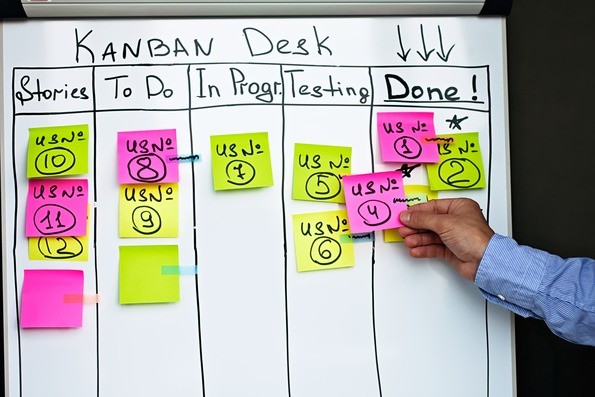Where does risk management come into play when it comes to agile methodologies? When I think of risk management I imagine complicated equations and graphs that are used to calculate and measure all the different types risks a firm could possible run into. When working with an Agile team you will not see anyone sitting down and calculating the probabilities of different events. Risk management in Agile Methodologies is inherent and built into an Agile team’s day to day operations.

Using Agile methodologies helps you define more efficient risk management strategies and reduce the time to market of your innovative product.
Inherent Risk Management
If we look specifically at Scrum Framework, we can see how risk management is inherently present in this methodology. Every work day, the team meets for the Daily Scrum where they answer three questions:1. What did I do yesterday?2. What do I need to do today?3. Are there any impediments in my way?So team members take time at the beginning of every day to outline what they need to accomplish by the end of the work day while identifying any impediments that would get in their way while also coming up with a plan to destroy them. Thus risk management is inherently a part of an Agile team’s day to day operations.Agile teams focus on what will add value to a project right now. Fast deliveries are the central focus of Agile methodologies and teams want to deliver a product with value as quickly as possible and then future sprints and releases aim to keep adding value to the product or service. To do this, team members follow a general road map that leads to various milestones according to the product’s vision. While working towards these milestones, team members identify what tasks will have an immediate positive impact on reaching them while identifying the risks related to these tasks. To ensure that these impactful tasks are completed, team members will destroy any of the identified impediments that would slow down their completion. This ensures fast and regular product deliveries.
Agility Helps Projects Avoid the Biggest Risk
The biggest risk in any project is the possibility of not releasing any product or service at all or that a product is delivered late or ends up being different than what was asked for. Agile methodologies ensure that these risks will not become a reality. The focus on frequent and multiple deliveries ensure that there is always something that will be delivered, and customer feedback can help shape future deliveries to ensure that the correct product is being delivered.An Agile mindset means that team members inspect past results, the present situation, as well as future goals. During inspection, impediments are naturally found and the flexibility of Agile teams allow them to overcome these obstacles.
Agility Means Constant Progress
Progress is the main focus of all Agile teams. Even if an unforeseen impediment does pop up, Agile teams are fluid and problem solving comes as second nature. When it comes to Agility and risk management, it can be said that the focus is more about solving impediments than predicting them. It is about delivering something valuable today and working through the impediments that are currently in the way of progress. Long term risk assessment still occurs in Agile methodologies, but the identified risks are dealt with as they begin to impede current value driven deliveries.If you need help with an Agile transformation or want to hire your own Agile team, contact us today.Or catch up with your Agile reading here:How to fail the deployment of agile practices in 5 stepsAgile Methodologies: The Perfect Match for StartupsAgile transformation: connecting the dots of a two-year transition to agile best practices

 (2 votes, average: 4.50 out of 5)
(2 votes, average: 4.50 out of 5)







